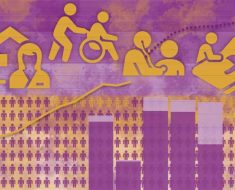Scientists at the Stanley Manne Children’s Research Institute at Ann & Robert H. Lurie Children’s Hospital of Chicago and colleagues discovered how a type of RNA, called Evf2 enhancer RNA, regulates key genes during a critical stage in embryonic brain development. They found that by regulating these genes, the RNA plays an important role in cells that produce GABA neurotransmitters, which block impulses between nerve cells in the brain. Any disruption in this process could lead to seizures, mood disorders, schizophrenia, or other neurological disorders associated with GABA dysfunction. Their findings, published in Molecular Cell, ultimately could help identify therapeutic targets to prevent the development of neurological diseases.
“We provide evidence for RNA-dependent mechanisms that regulate the selection and expression of specific genes in GABAergic interneurons during embryonic brain development,” says senior author Jhumku Kohtz, Ph.D., from Manne Research Institute at Lurie Children’s and Professor of Pediatrics at Northwestern University Feinberg School of Medicine. “Clarifying what this RNA is doing expands our understanding of how certain neurological diseases develop, which brings us a step closer to intervening at the earliest stages.”
Through a series of experiments, Dr. Kohtz and colleagues demonstrated that during embryonic brain development, the RNA selects and regulates four specific genes at unprecedented distances on the chromosome. By recruiting a protein that helps determine three-dimensional chromosomal architecture, the RNA correctly places a key DNA region near these specific genes, and allows them to be accessible for regulation. These genes are part of a network of genes that regulate the activity of nerve cells that make GABA, the major inhibitor in brain circuitry. Dr. Kohtz and colleagues showed in a mouse model that without this RNA, adult mice were more susceptible to seizures due to reduced GABA inhibitory function.
Source: Read Full Article





